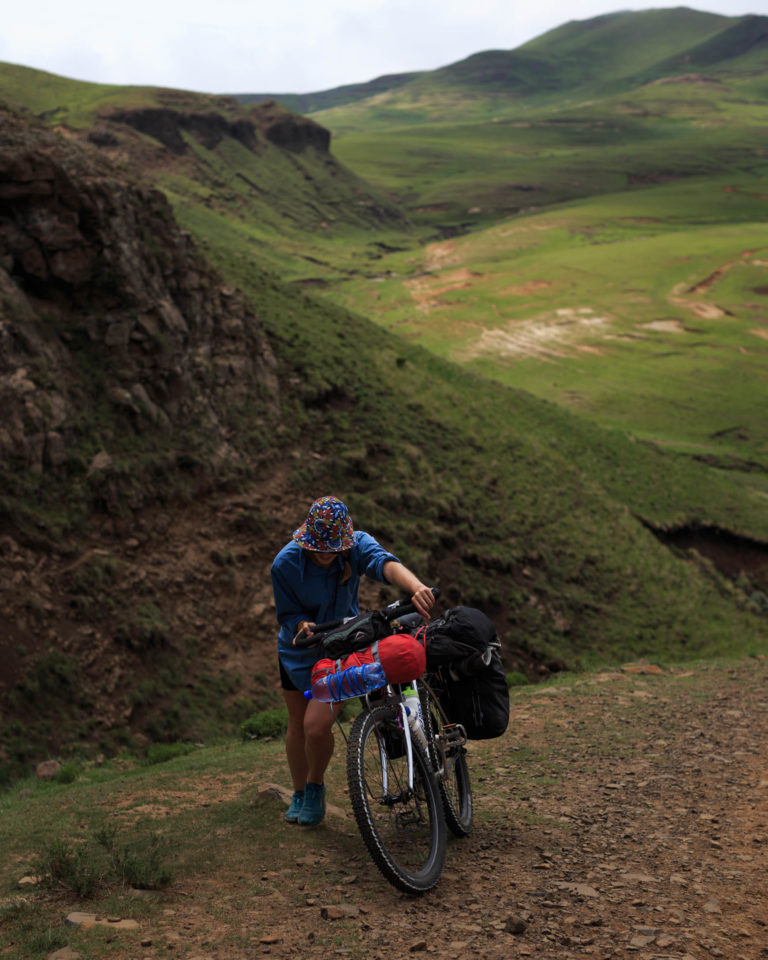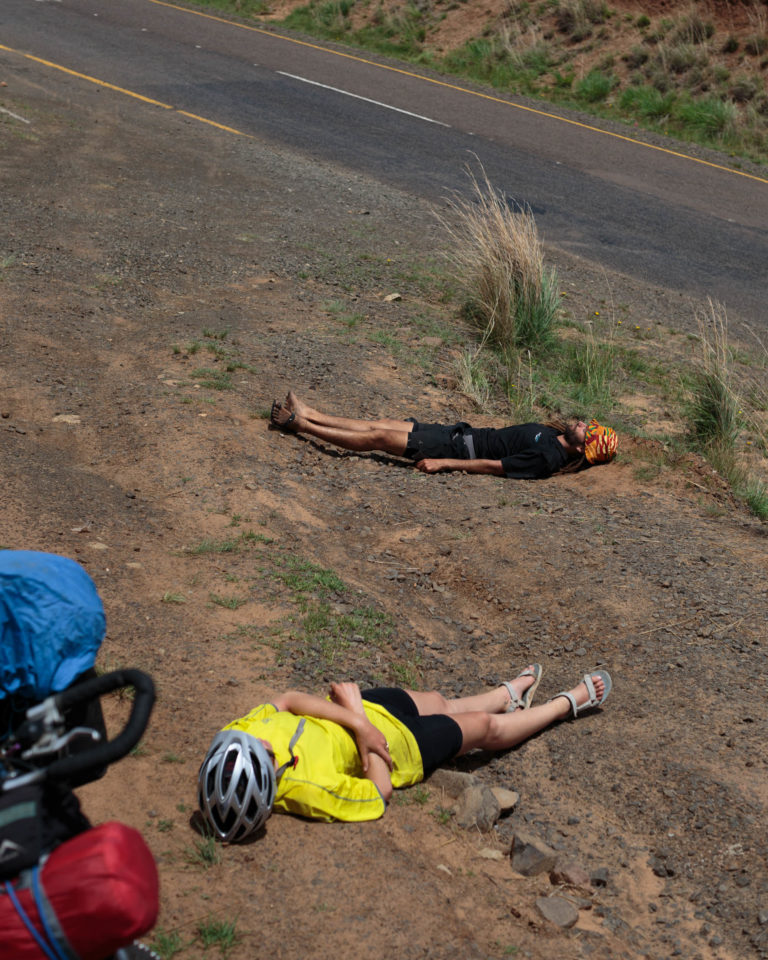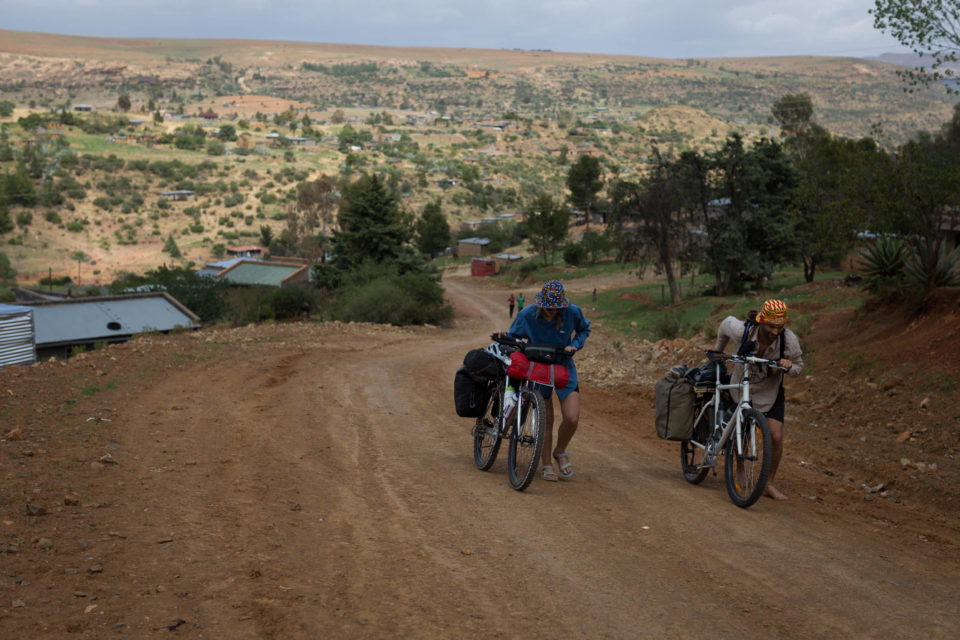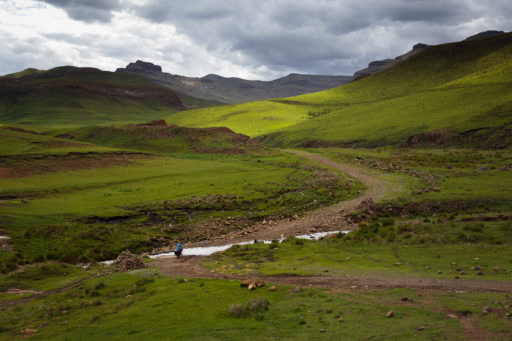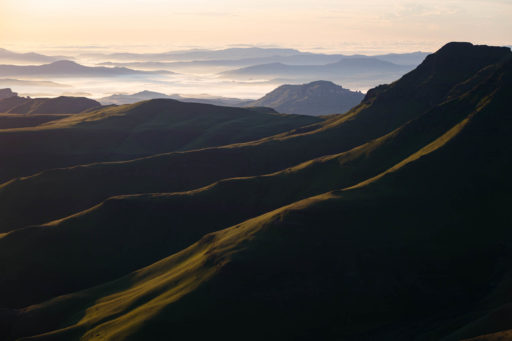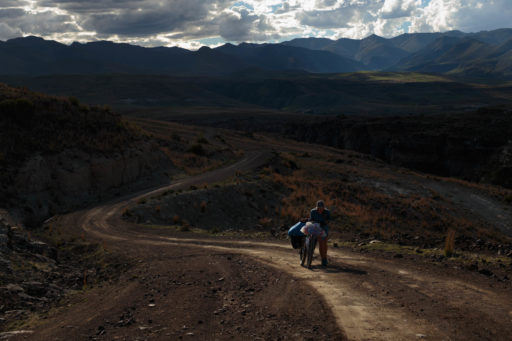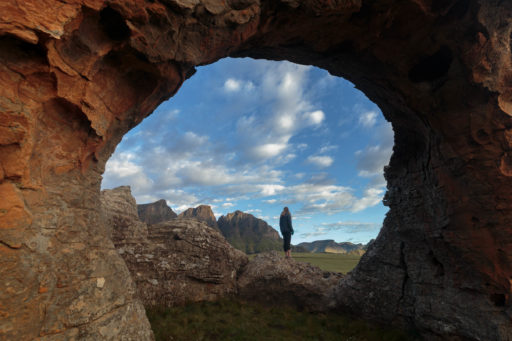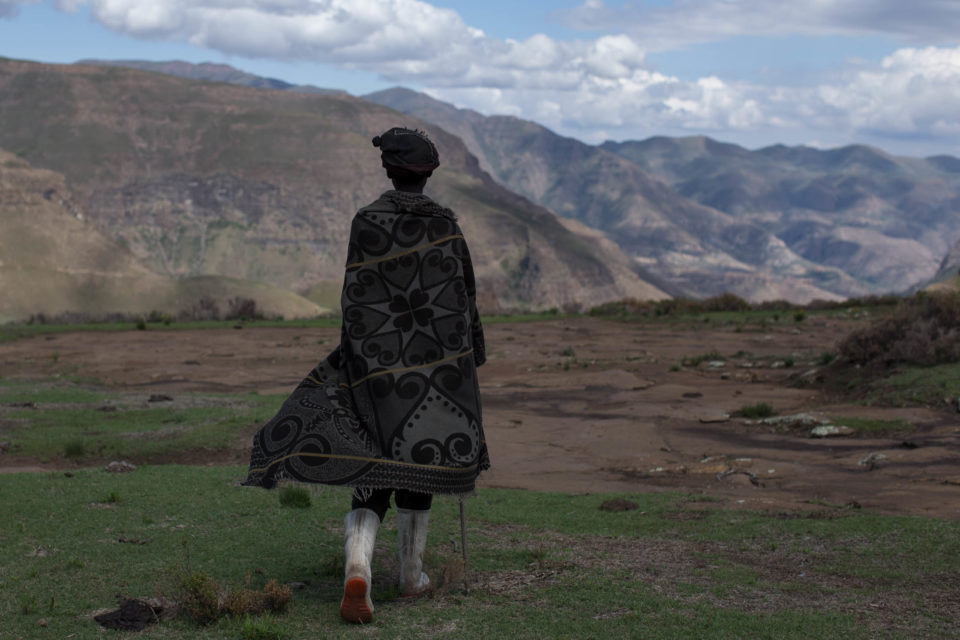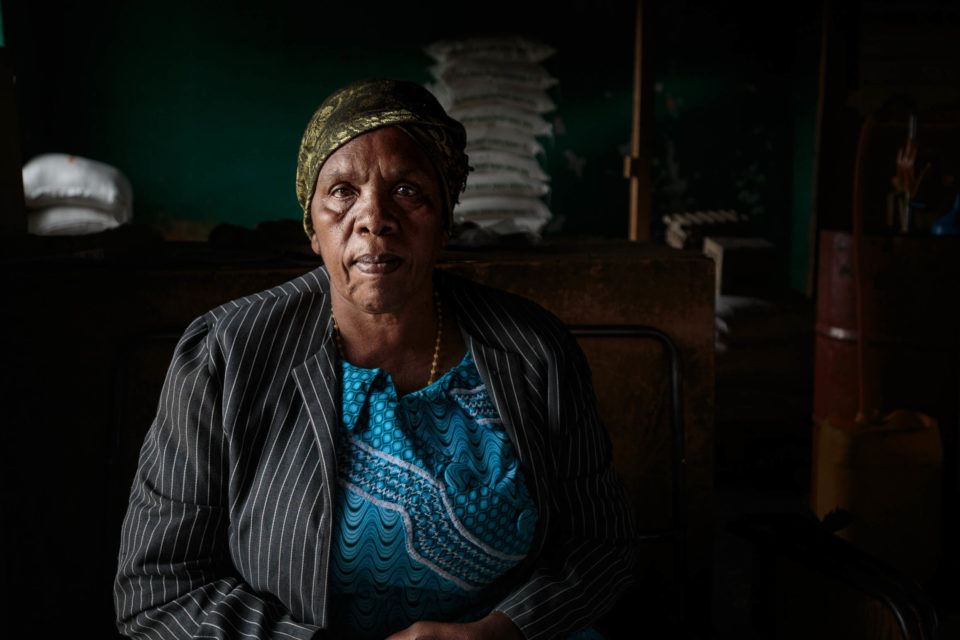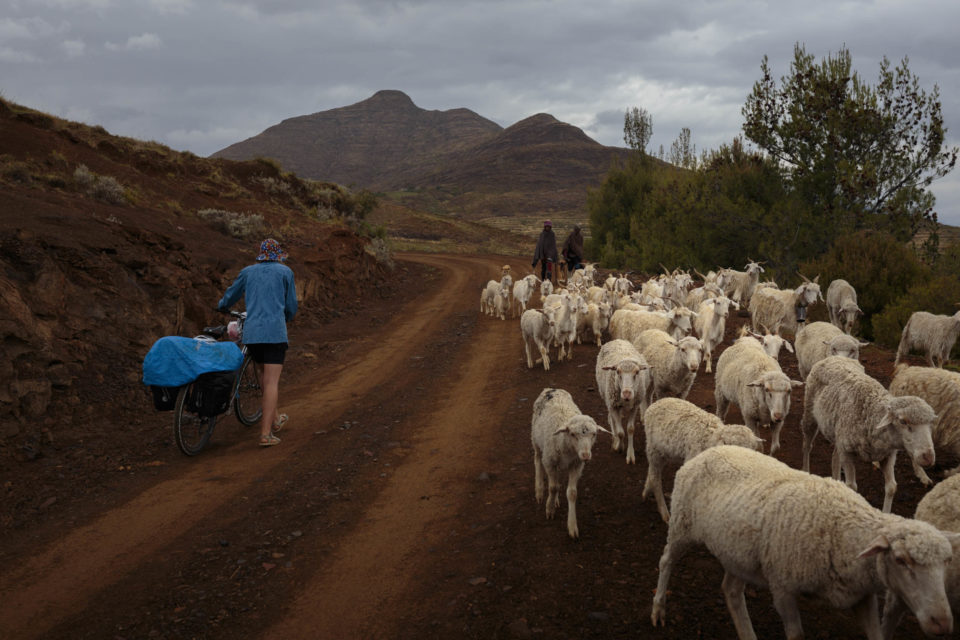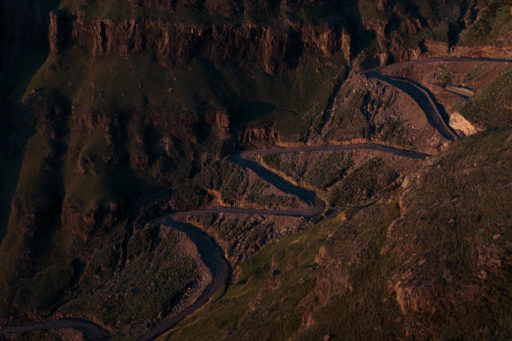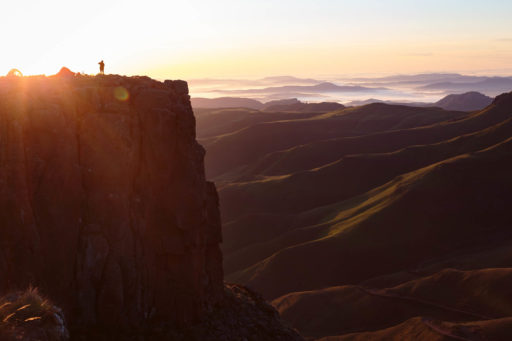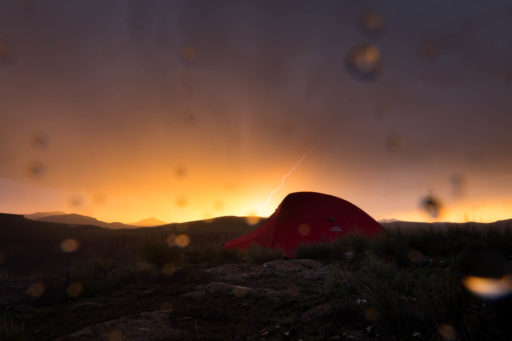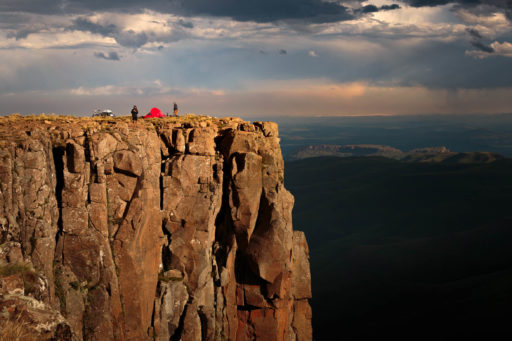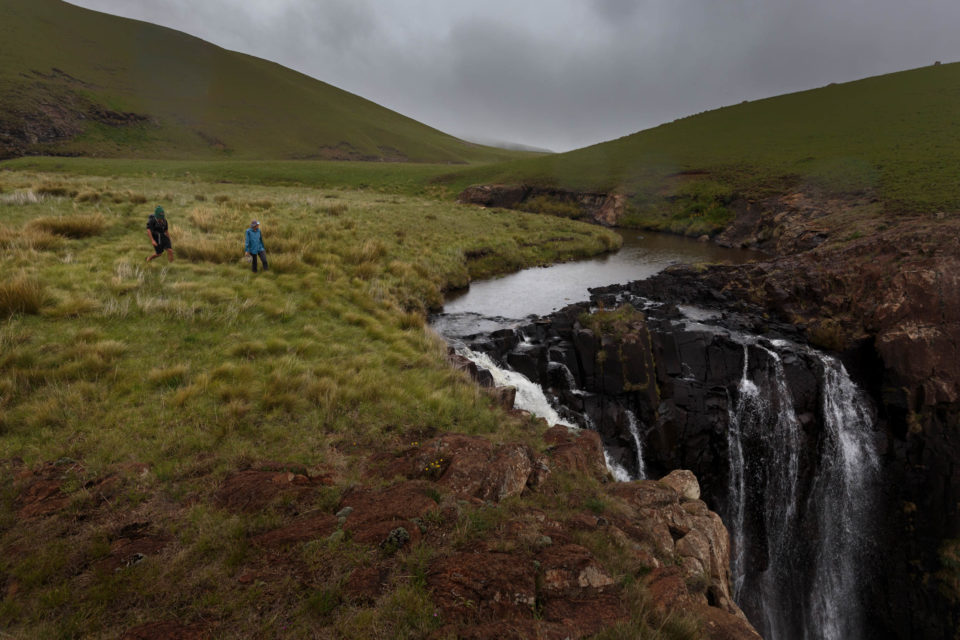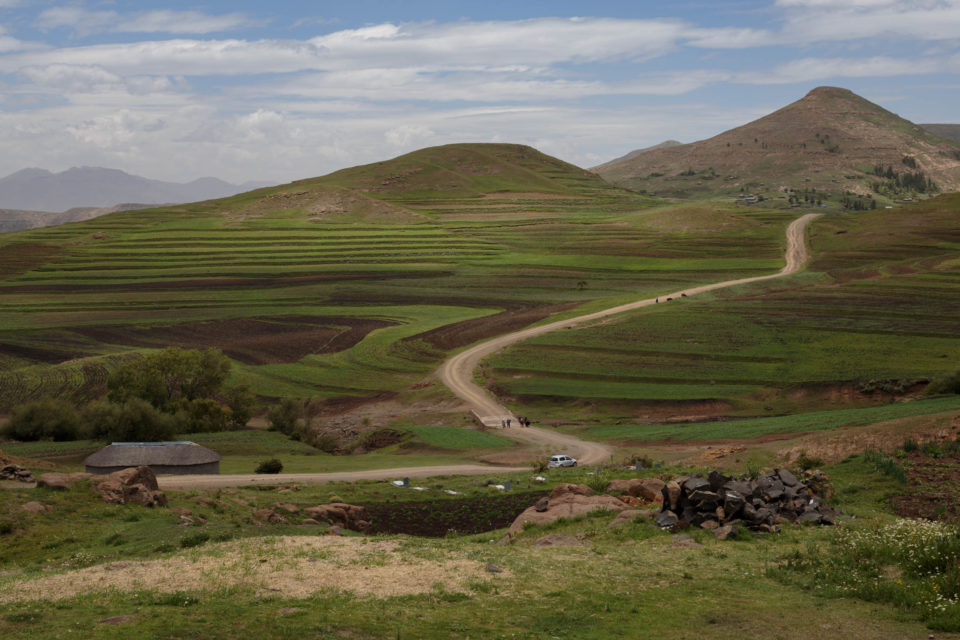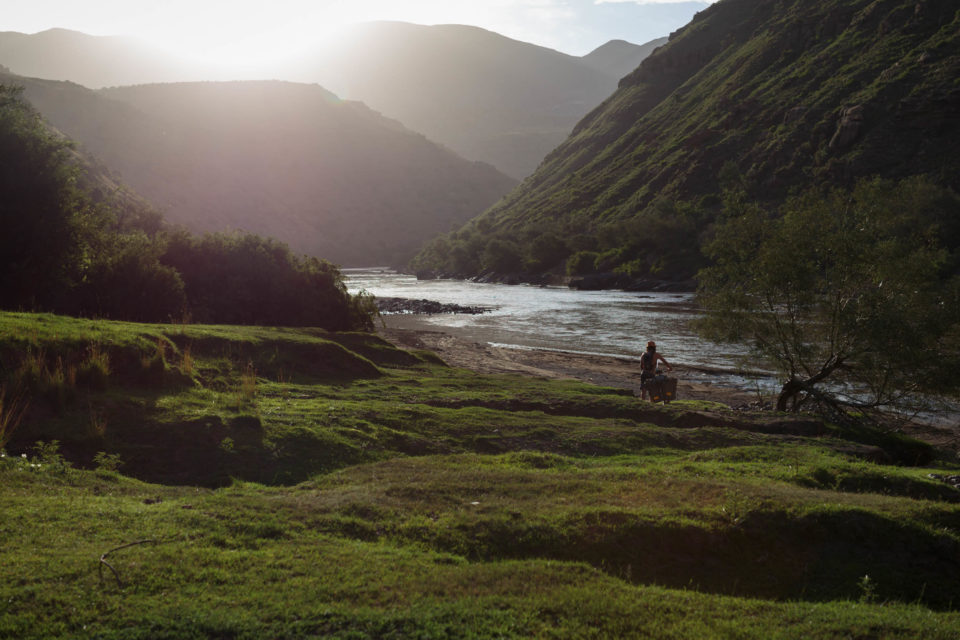Across Lesotho: Lessons from the Mountain Kingdom
Share This
With next to no cycling experience, Johan Wahl and his wife Jana picked up a couple of bargain vintage bikes from their local classified ads and headed off on a three-week, 700-kilometer journey across Lesotho. Find their story of figuring things out as they rode along through the Mountain Kingdom…
Words and photos by Johan Wahl (@a.whale.away)
After weeks of searching through ‘bicycle’ listings on Gumtree (our local online classifieds), I was all but ready to throw in the towel when I finally struck gold: “Imported Vintage Bicycle.” It was a chrome-plated beauty with matching metallic purple brake levers and calipers. Sure, it was rusted and missing some components (most parts of the drivetrain, among others), but I hardly even noticed. In fact, I didn’t even know if all those parts were necessary. I knew basically nothing about bicycles. And Jana, my wife, who this bike was intended for, knew even less, having never cycled before. Happy with what I saw, I bought the Vulcan without any questions. At $70, it would surely be a good bike, right?
Imagine my disappointment when, that night, I did an online search of my new Emmelle Vulcan and discovered that, according to one Retrobike forum user, “They were the cheapest of the cheap. Think supermarket own brand and then remove the quality.” It was a disheartening post to read and it ended with a warning, “Just because something looks fresh doesn’t mean it’s good or a bargain. I’d search for a real bike rather than this low-end excuse.” I sat there, stunned. Not only did I buy myself a piece of junk, it seems, but I was probably ripped off too! Even before it started, it was clear that this was going to be a long, interesting journey.

South Africans have a raw deal with international travel. Our passports offer very few visa benefits and our currency is practically worthless against major currencies. To give you an idea, R1.00 (one South African Rand) trades at only about 6 cents USD. Naturally then, South Africans are masters at the art of budget travel. If you sacrifice enough comfort, travel can be amazingly cheap. But, as I have learnt from experience, sacrificing comfort can be, well… uncomfortable.
Picture this: You’re packed like a sardine into a minibus with literally 25 other passengers. This is where you’ll be spending the day and likely most of the night too. Your backpack is tied to the roof with strands of handwoven grass and the only food you’ll have access to all day is the sun baked, deep-fried chicken claws periodically offered to you through the minibus’ windows. Pass a whole day in this minibus longingly trying to steal a glimpse at the exotic landscapes flying by outside. These are the very landscapes that brought you here, but you can’t see anything. Your view is obstructed by other passengers and, sometimes, their livestock too. Maybe after a while, you need to pee. Most men wait for the bus to stop every few hours, then rush out and turn their backs to the bus in an awkward ritual. It’s even more complicated for women. Experiences such as these are what inspired us to look to cycling as an alternative to backpacking. But we were so enchanted by our cycling dreams—that cycling would afford us all the comforts that backpacking can’t—that we neglected to consider that cycling actually involves pedalling a bicycle. Moreover, we completely underestimated how hard it would be to simply acquire affordable bikes in our own country that would be suitable for touring.
We had just returned from extended travels abroad and were easing back into ordinary life and the usual nine-to-five slog to earn our way to our next big travel goal. But we needed our fix, and so, for our summer holiday, we set our sights on our little neighboring country, Lesotho. An excellent opportunity, we thought, to try out bicycle touring for the first time. We assumed that we could cycle across the whole country fairly quickly, it being a small country and cycling being, well, easy, we thought. In keeping with our grander travel dreams and saving plans, this was going to have to be a cheap mission. The first objective, therefore, was finding cheap bikes. And that is how I came to buy the Vulcan.
Shortly thereafter I bought an old Diamondback from a friend for $100. The fork, a mix-and-match hand welded rig, had a loose metal object trapped inside the tubing that caused a perpetual metallic rattle. But despite the rattle, this bike inspired more confidence than the Vulcan. To start with, it came complete with all the essential components in place. Impressively, the tyres, although slightly (and oddly) cracked in places, bore the name “Maxxis.” I knew that Maxxis were good tyres. The wheels were tubeless: old Schrader valve-ends had been cut out from tubes and inserted through the duct-taped rims. I didn’t see it necessary to replace the sealant, much of which had hardened in the three years the bike was hanging from the garage ceiling. I simply pumped air into it and all seemed fine.
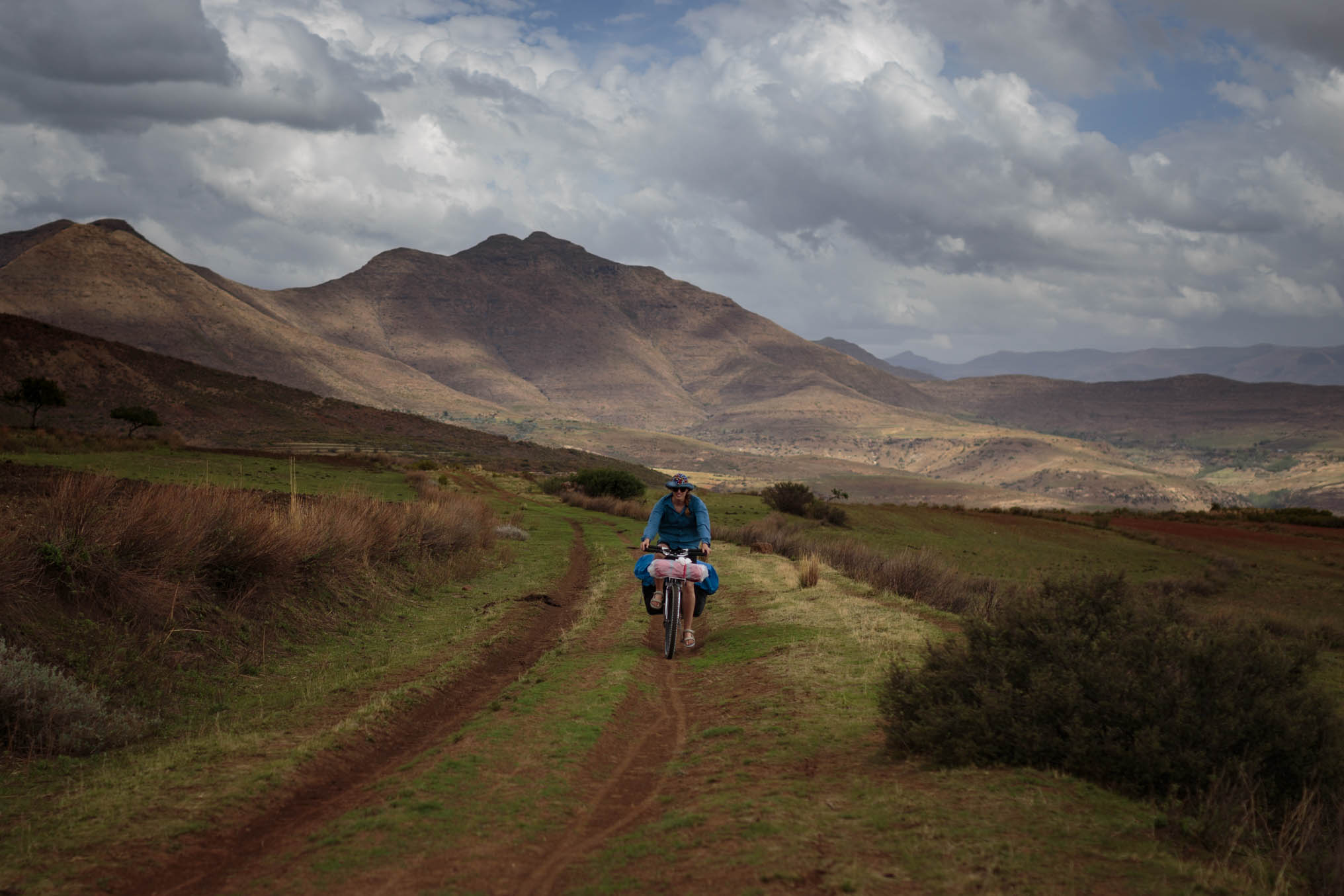
With the Diamondback then in practically perfect condition, I returned my attention to the Vulcan. Over the next few weeks, with lots of help from Oom Christo, an old friend and local cycling legend, and a fair amount of parts scouting, we managed to get the wheels rolling. The wheels, however, were still a problem. Let’s just say it didn’t take any experience to see that those wheels, rusty as they were, were not going to go very far. I took to Gumtree again, and for $45, found a wheelset that sported another name I recognised: Shimano. It had to be good if the hubs were Shimano, right?
As a last-minute addition, we picked up a third crew member, my cousin, Reynier, aka Cuz. He had cycled in Africa before, for two years without any money! He made it all the way to Burundi, suffering from Malaria five times en route before his South African passport finally allowed him no further lest he buy a visa. But with no money in his pocket, that wasn’t an option, so he stayed in Burundi for a year before returning home. Besides the stories Cuz would entertain us with, we also found comfort in taking someone along who had more cycling experience than us. That is to say, any at all.
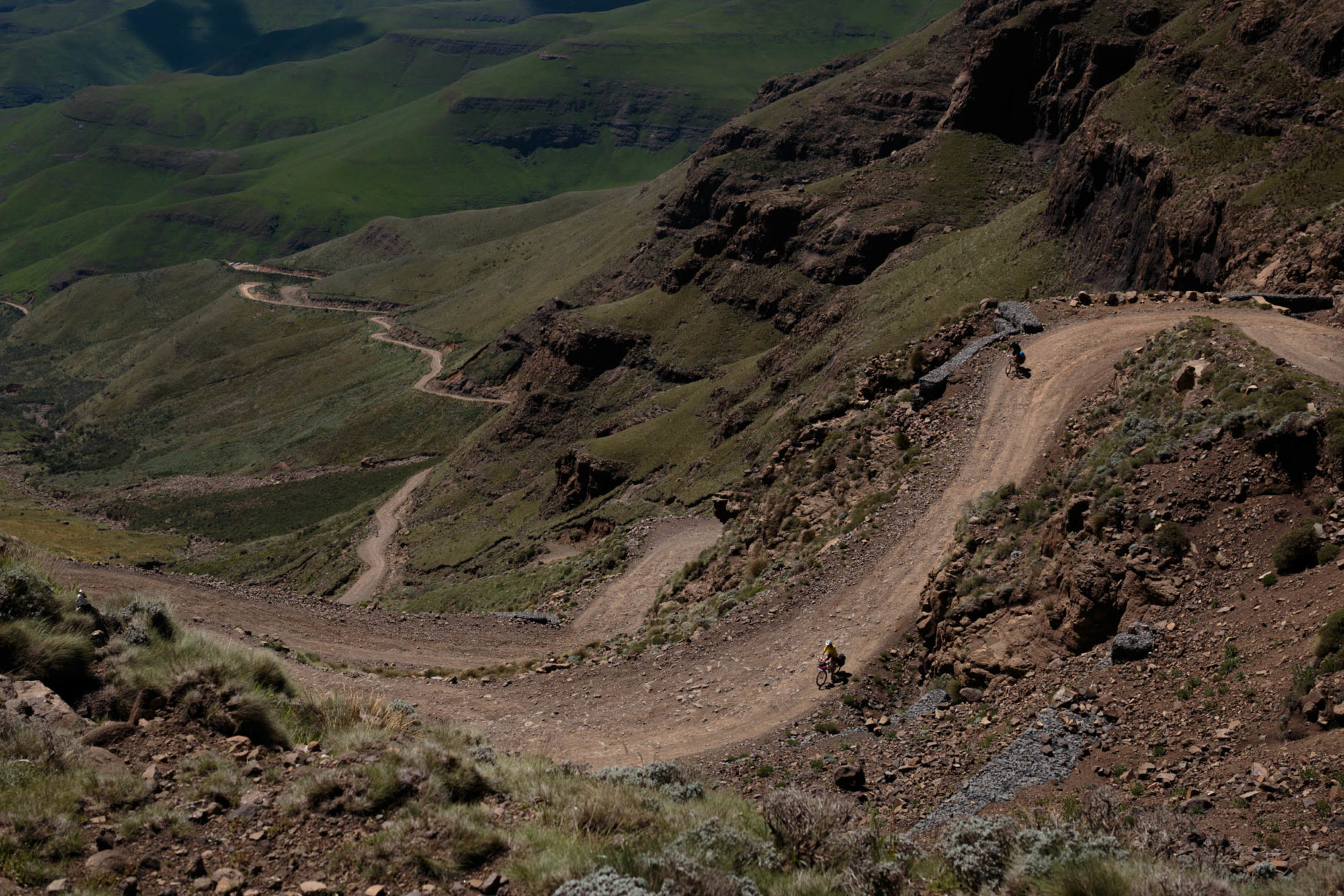
Time slipped away and before we knew it, we had only a week before we would have to load our bikes into a bus, headed for the Lesotho border—a week to get our butts adapted to the saddle. In that week we found time for two practice rides, the first of which was also both of our first times ever pedaling more than 30 kilometres. Jana’s butt, in particular, really suffered, but as only time would tell, her butt was going to be spared for the most part.
Within a single day’s cycling in Lesotho, we at once realised our foolishness. Our bikes quickly revealed their shortcomings. The terrain was brutal and the complete absence of any form of support dawned on us big time. Our cantilever brakes were practically useless on the steep descents and contributed to no more than sore hands. The Vulcan’s brakes, those very metallic purple beauties that sold the bike for me, were particularly problematic. We dared raise our hopes that we would find improved V-brakes in a shop somewhere—the idea of pushing loaded bikes down hills for three weeks was unsettling, for sure—but our hopes were short lived.
In the regional capital of Quthing, our first big ‘city’ (though no more than a little town) a shop owner bluntly told us that we can forget about finding bicycle parts. “You are in the arse-end of Lesotho now,” he said. Indeed, there would be no bicycles other than the odd remnant of a bicycle in all of eastern Lesotho (our route). The Basotho have long since learned that, in the Mountain Kingdom, nothing beats horsepower, and unless we could turn horseshoes (for horseshoes there were plenty) into V-brakes, we were stuck with those darn purple pieces of crap.
Brake issues aside, the climbs were no less problematic than descents. Our old 18-speed drivetrains lended little ease to the task and it was becoming clear to us, quite shockingly to be honest, that there would be a lot of pushing in the days to come. Afterwards, my records showed that we climbed, mostly pushing, over 1,000 metres a day on average. All of the sudden, our goal of reaching the opposite end of the country in 20 days seemed enormously ambitious. It was beyond my imagination that 700 kilometres on a bicycle, in such a generous time frame, would be much of a challenge at all. But in the same vein, I never imagined that so much of it would have to be done on foot.
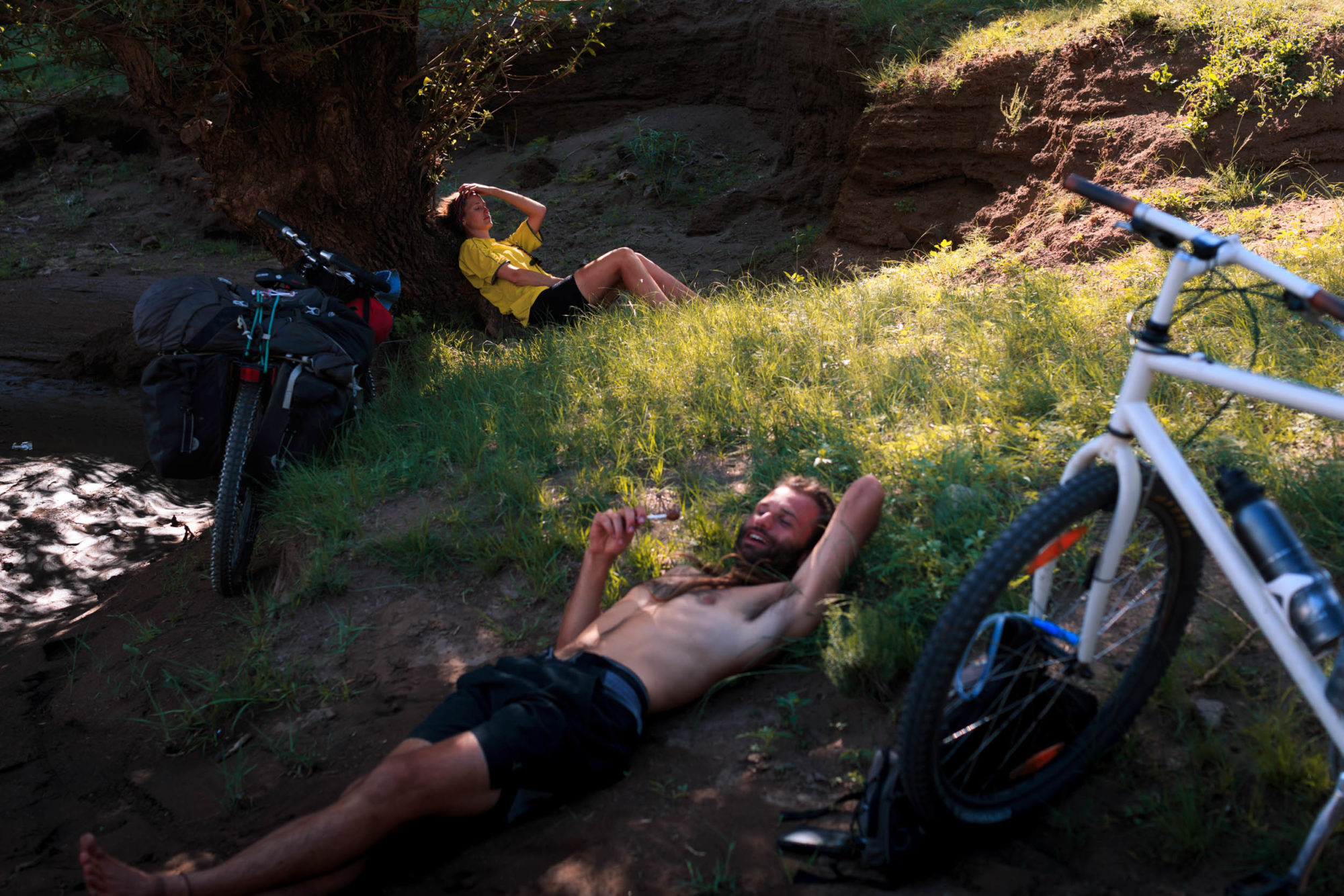
Sure, what unfolded in the days that followed inspired many underbreath curses and led to a lot of suffering, especially on Jana’s part. She was promised a relaxing summer break, far removed from the minibus nightmare described earlier, definitely not the sufferfest that this trip resulted in. Cuz wisely reminded us one day that cycling is experienced on a scale of extremes. While the lows can be extremely disheartening, the highs, to an equal extent, are unprecedented. We experienced Lesotho more intimately than any country we had passed through on public transport before. Nothing, not a single moment or a single sight, was lost through window tint or motion blur. Raindrops were not just some splashes on a windscreen, but cool water that struck and wet our skin. Every bit of profile undulation was felt in our bodies and mimicked in the rhythmic rattle of that loose thing in my fork tube, from the smallest of loose stones to the massive successive hills.
We passed through breathtaking landscapes and were greeted by the friendliest of faces. Lesotho truly is a beautiful country, but a desperate one nonetheless. It was remarkable to note the sparsity of service infrastructure such as electricity, roads, schools, and clinics. Our encounters with the people further testified to the desolation. We were told countless stories of boys who’ve had to abandon school at a young age to tend to the family’s herds. For many of the Basotho, a trip to the clinic is a three-day journey on foot. It is a harsh landscape moreover. At mostly above 2,000 metres in elevation, the air is thin and the climate extreme.
Our experience was that most days would start in intense heat and end in fantastic lightning storms. We had a little bit of everything thrown at us, except for the food our bodies needed. In general, shops in rural Lesotho are very basic. Beyond the bare essentials such as salt, oil and flour, most shops offer no more variety than canned chakalaka mix, pilchards, instant soya mince, cheese puffs and warm Coca-Cola. Soon we became obsessed with meals and food became the topic of virtually every conversation. It didn’t take us long to get fed up with the pilchards—I’m sure most cycle tourers will know this feeling.
In all, we spent 19 days cycling through Lesotho, two of which were forced rest days when heavy rains had us hiding away in a cave. We climbed over 17,000 metres, descended nearly as much, and covered a distance of almost 700 kilometres, nearly 300 of which were done laboriously on foot. We had a total of three luxurious days on tarmac, the rest was all on gravel, ranging from smooth to completely unrideable, but all invariably uneven. At times, even pushing was out of the question and we would resort to unloading and carrying our bikes.
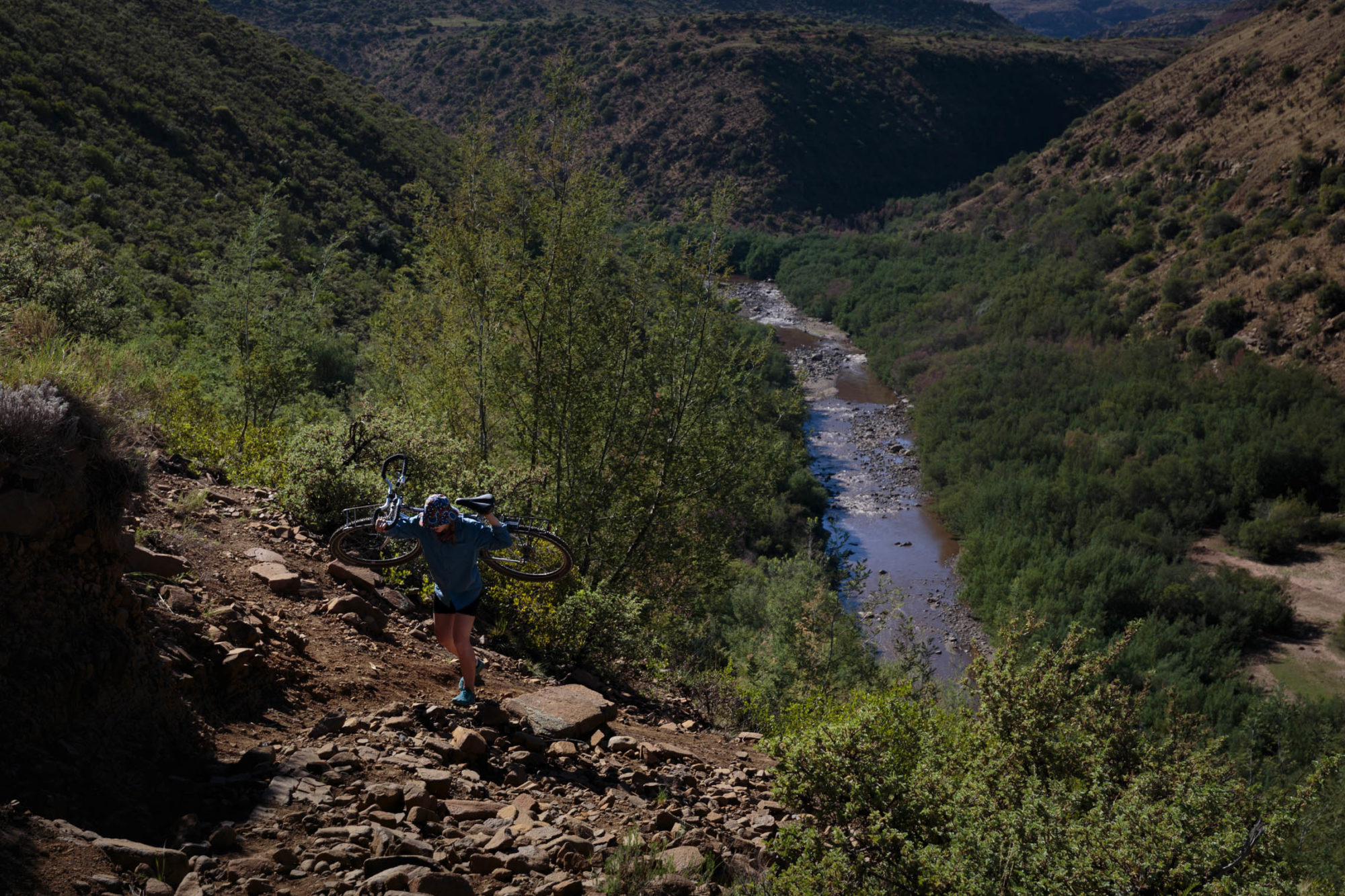
All this considered, our dubious Gumtree rigs did us awfully proud. Even the Vulcan, although crippled with a few tube punctures, some missing carrier screws, a rattly bottom bracket, and a wobbly rear hub, crawled over the finish line in fine style, purple calipers still shining bright. The single biggest mechanical issue we had was when Cuz snapped his rear hub axle. This happened on a remote high pass and we almost waved him goodbye, but by some miracle, the QR skewer was able to hold the wheel in place for just long enough to complete the last 150 kilometres.
Although it wasn’t the summer break we had in mind, our 19 days in Lesotho were nothing short of the adventure of a lifetime. If anything, they were the final decisive force in driving home the idea that from here on forward, cycling will always be our preferred mode of travel.
Johan and Jana entered Lesotho at Telle Bridge border from South Africa and made up a route as they went, eventually joining a portion of our Lesotho Traverse.
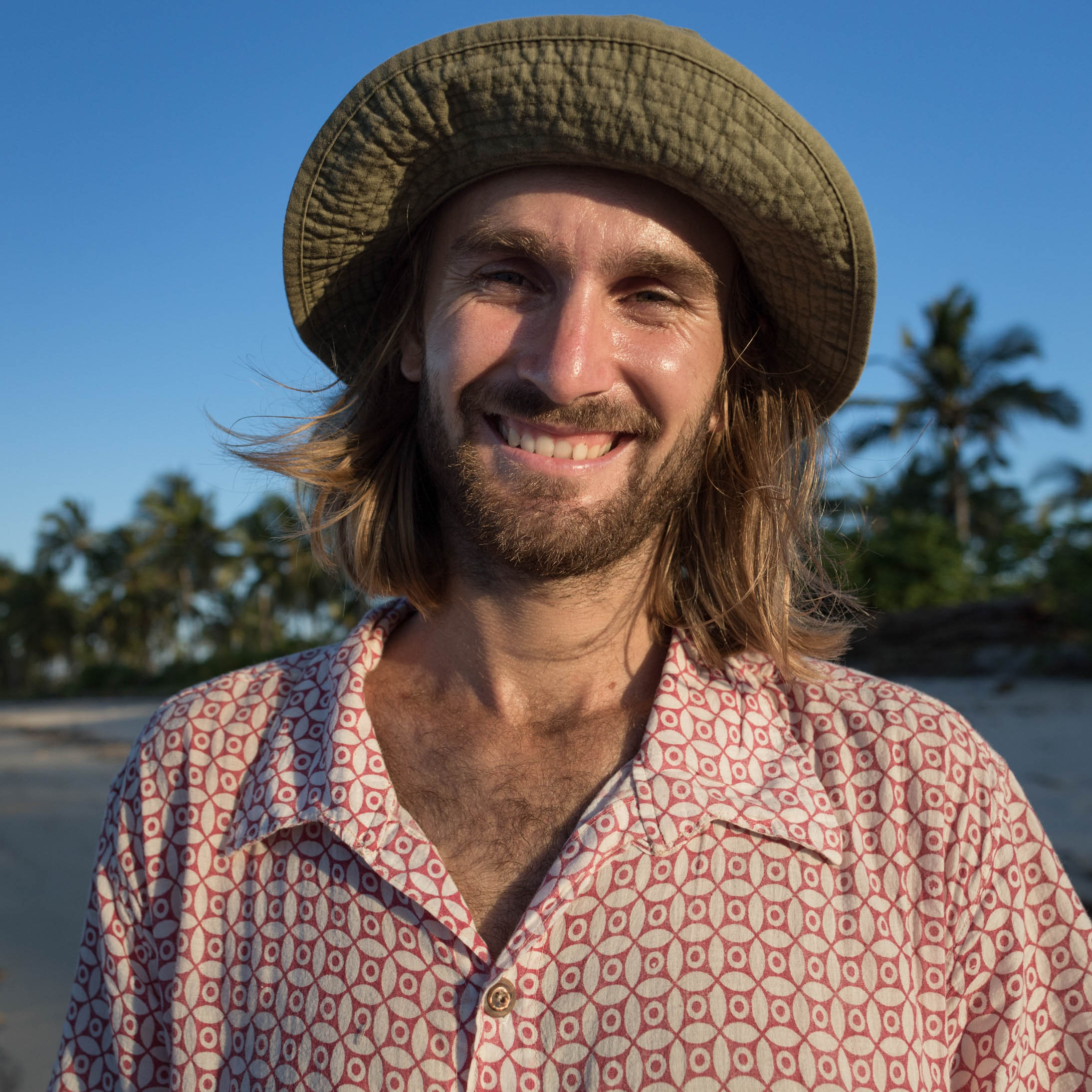
About Johan Wahl
Johan Wahl lives in Cape Town, South Africa, where he works as a contract civil engineer to fund his travels. For the better part of the last three years, Johan and his wife, Jana, have travelled through Africa, Asia, and South America. His biggest passion is photography but he is also a keen long-distance runner and rock climber. He is extremely attracted to bikepacking and plans to do all of his future adventures on bicycle. Find more of his work on Instagram @a.whale.away.
Please keep the conversation civil, constructive, and inclusive, or your comment will be removed.













